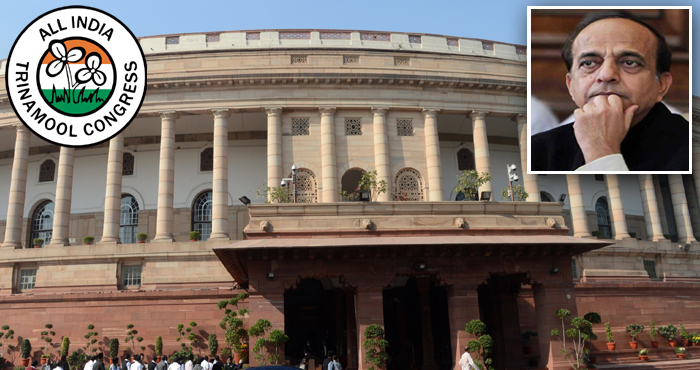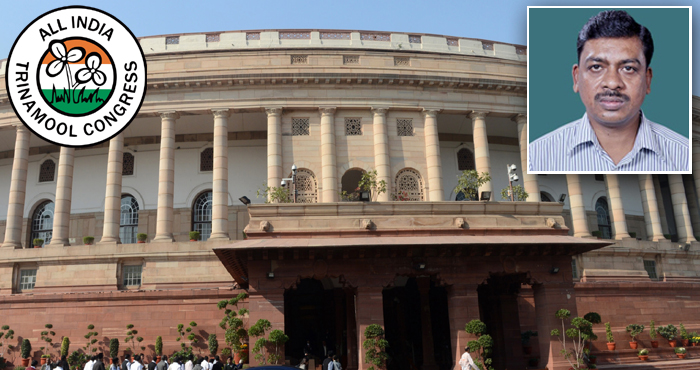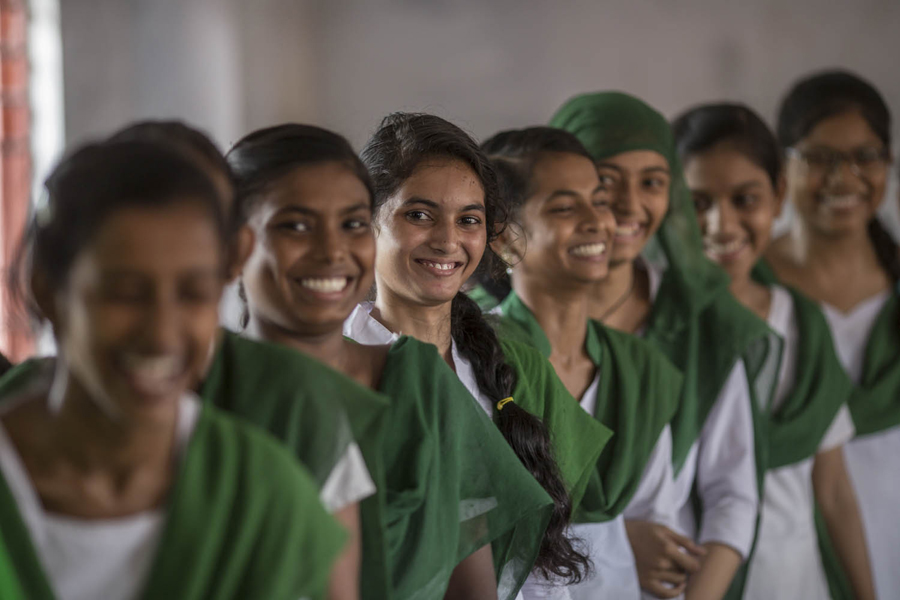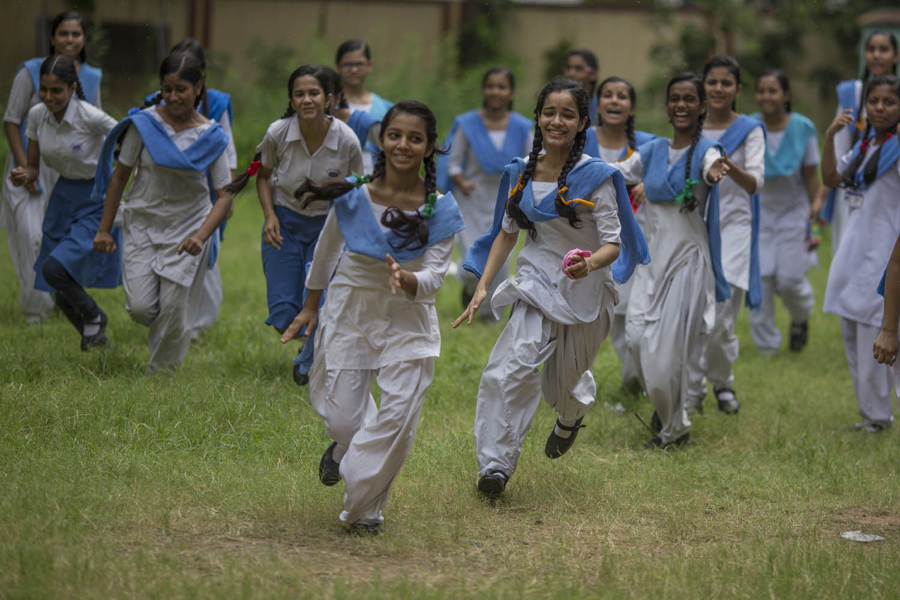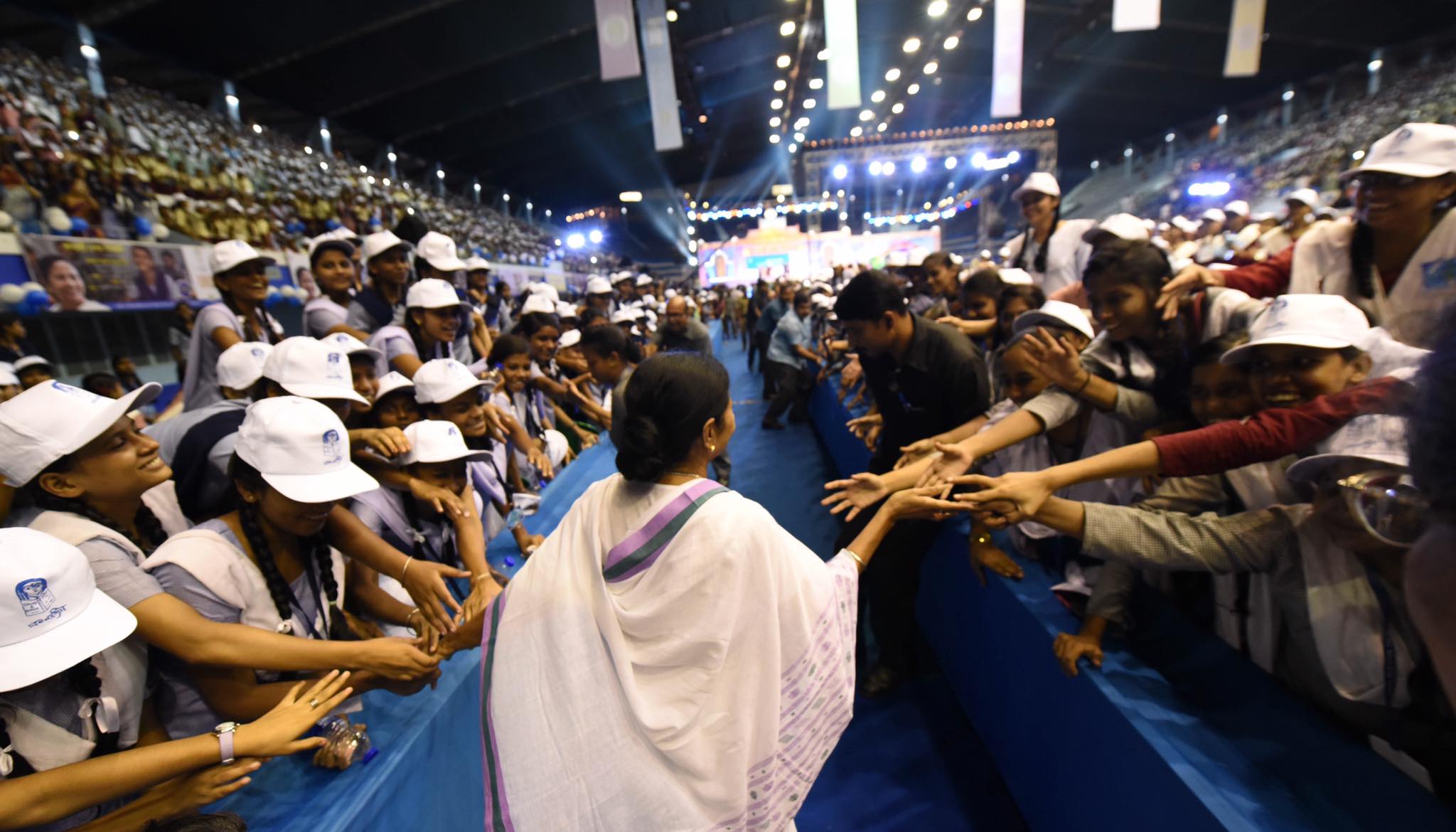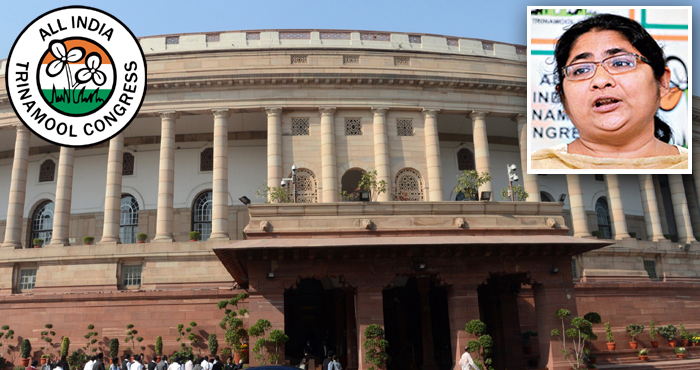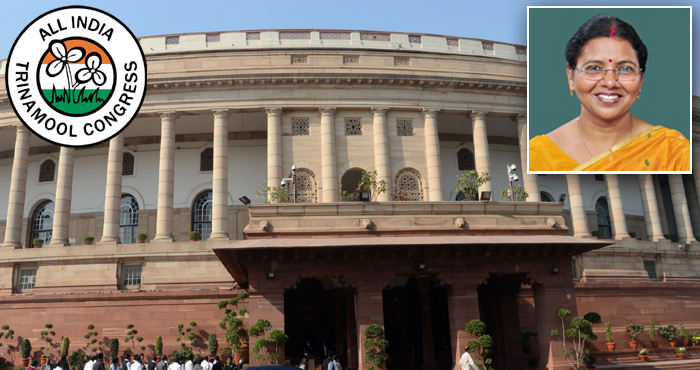Bengal Government celebrated the international recognition and appreciation received by Kanyashree Prakalpa at a function today at Netaji Indoor Stadium in Kolkata.
Kanyashree Prakalpa was awarded the First Prize at United Nations Public Service Award Ceremony this year.
Representatives from all corners of the State at today’s function. Successful Kanyashree girls were felicitated by the Bengal Chief Minister Mamata Banerjee.
Excerpts from the Chief Minister’s speech:
Today is a day of pride for girls. This is the first time a scheme of a State from India won the first prize at United Nations Public Service Day. We dedicate this award to all the Kanyashree girls. We are indebted and grateful to UNICEF, United Nations, DFID. In the past, Kanyashree received several awards for e-governance. The award from UN was the cherry on top.
I had designed the logo and named this scheme. We have also composed a theme song for Kanyashree scheme. Today’s Kanyashree will shape the future. They will run the society. Kanyashree girls are our pride. They are our inspiration.
More and more girls are pursuing higher education now. Now we have K1 (for school girls) and K2 (for college students). We will now launch K3 programme for university students. We will give monthly stipend of Rs 2500 to girl students who score 45% marks.
We provide a sapling to families of newborn babies under Sabuj Shree scheme. We provide scholarships, mid-day meals, school uniforms, bags, shoes. We provide Sabuj Sathi cycles, Siksha Shree, Kanyashree. We have initiated Swami Vivekananda scholarship for meritorious students. We have also set up a fund for research scholars whose stipends have been stopped by UGC.
Poverty is not crime. Jonmo hok jotha totha, kormo hok bhalo. I struggled all my life but never bowed my head before anyone. This is just the beginning; whole life lies ahead. Do not be bogged down by failures. Let there be a competition on merit not money. Let there be a competition about culture, harmony, and humanity. A man is nothing without his character.
Rabindranath and Nazrul are our inspirations. Let them act as your guides in your life. Remember Tagore’s words: “Where the mind is without fear”. Remember what Nazrul wrote, “Samyer gaan gahi”. Swami Vivekananda said, “Na jagile Bharat lolona, ei Bharat jage na jage na.” Do not forget Netaji’s slogan “Jai Hind” or Bankim’s song “Vande Mataram”.
There is no difference between Maa, Mother and Amma. We are humans first, religion comes later. We expect our students to follow the path of humanity, culture and education.
What Bengal thinks today, India thinks tomorrow. Bengal will become the best in the world.
কন্যাশ্রীর মেয়েরা আমাদের গর্বঃ মমতা বন্দ্যোপাধ্যায়
মুখ্যমন্ত্রীর স্বপ্নের প্রকল্প-‘কন্যাশ্রী’ আজ বিশ্বসেরা। আজ এই আন্তর্জাতিক স্বীকৃতি ও সম্মান উদযাপন করা হল নেতাজি ইন্ডোর স্টেডিয়ামে।
এবছর সারা বিশ্বের ৬২টি দেশের ৫৫২টি সামাজিক প্রকল্পের মধ্যে বাংলার কন্যাশ্রীকে সেরা ঘোষণা করে রাষ্ট্রসংঘ। প্রথম পুরস্কার পায় মুখ্যমন্ত্রীর স্বপ্নের প্রকল্প “কন্যাশ্রী”।
রাজ্যের সকল প্রান্ত থেকে কন্যাশ্রীদের সম্মানিত করেন মুখ্যমন্ত্রী মমতা বন্দ্যোপাধ্যায়।
মুখ্যমন্ত্রী মমতা বন্দ্যোপাধ্যায়ের বক্তব্যের কিছু অংশ:
আজ মেয়েদের গর্বের দিন। রাষ্ট্রপুঞ্জ থেকে প্রথম পুরস্কার পেয়েছে কন্যাশ্রী। কন্যাশ্রী এখন বিশ্বশ্রী। আমরা UNICEF, United Nations, DFID এর কাছে কৃতজ্ঞ। এছাড়াও কন্যাশ্রী e-governance এর জন্য বিভিন্ন পুরস্কার পেয়েছে।
কন্যাশ্রীর লোগো আমার আঁকা, প্রকল্পের নামও আমার দেওয়া। এই প্রকল্পের জন্য আমরা একটি থিম সং করেছি। আজকের কন্যাশ্রীরাই আগামীদিনের ভবিষ্যৎ। কন্যাশ্রী মেয়েরাই আমাদের গর্ব। ওরাই আমাদের অনুপ্রেরণা।
এখন অনেক মেয়েরা উচ্চ শিক্ষার সুযোগ পাচ্ছে। স্কুলের মেয়েদের জন্য আমাদের রয়েছে K1 এবং কলেজের মেয়েদের জন্য রয়েছে K2। বিশ্ববিদ্যালয়ের মেয়েদের জন্য আমরা K3 চালু করব। যারা ৪৫% নম্বর পাবে তাদের ২৫০০০ টাকা স্কলারশিপ দেওয়া হবে।
সবুজশ্রী প্রকল্পের আওতায় নবজাতকদের একটি করে চারাগাছ দেওয়া হচ্ছে। আমরা স্কুলের বাচ্চাদের স্কলারশিপ, মিড ডে মিল, স্কুল উনিফর্ম, ব্যাগ, জুতো দিচ্ছি। শিক্ষাশ্রী, সবুজ সাথী সাইকেল, কন্যাশ্রী দিচ্ছি আমরা। আমরা স্বামী বিবেকানন্দ মেরিট স্কলারশিপ চালু করেছি। UGC স্কলারশিপ দেওয়া বন্ধ করে দিয়েছে, যারা গবেষণা করেন তাদের জন্য আমরা একটি ফান্ড চালু করেছি।
দারিদ্র্য আমাদের জীবনের অপরাধ নয়। জন্ম হোক যথাতথা, কর্ম হোক ভালো। আমি সারাজীবন অনেক কষ্ট করেছি কিন্তু কখনো মাথা নত করিনি। দারিদ্র্যকে জয় করতে হবে। জীবন সবে শুরু হয়েছে, এখনও সারা জীবন পরে আছে। হতাশা-চিন্তা-শঙ্কার কোন জায়গা নেই। আর্থিক নয় মেধার প্রতিযোগিতা হোক, সংস্কৃতির প্রতিযোগিতা হোক, মানবিকতার প্রতিযোগিতা হোক, সম্প্রীতির প্রতিযোগিতা হোক।
মানুষ শেষ হয়ে যায় যখন তার চরিত্র চলে যায়। শিক্ষা-সংস্কৃতি- সভ্যতার মেলবন্ধন, মানববন্ধনের মধ্য দিয়ে আমরা কাজ করি। মা মাটি-মানুষই আমাদের ধ্যান-জ্ঞান-মন-প্রাণ। কবিগুরু, নজ্রুল ইসলাম আমাদের অনুপ্রেরণা। কবিগুরুর একটা কথা মনে রাখবেন, ‘চিত্ত যেথা ভয় শূন্য, উচ্চ যেথা শির’। মাথা উঁচু করে চলতে হবে। নজরুল বলেছিলেন, ‘সাম্যের গান গাই’। স্বামী বিবেকানন্দের কথা মনে রাখবেন, ‘না জাগিলে ভারত ললনা, এ ভারত জাগেনা’। যার আদর্শ-দর্শন-মনন-স্বার্থকতা আছে সেই বিশ্ব সেরা। নেতাজির ‘জয় হিন্দ’, বঙ্কিমের ‘বন্দেমাতরম’, কবিগুরুর ‘জনগণমন’ কখনো ভুলবেন না।
মা মাদার আম্মির মধ্যে কোন তফাত নেই। সবার আগে আমরা মানুষ। আমি আমার ছাত্রবন্ধুদের কাছে মানবিকতা আশা করি, শিক্ষা সভ্যতা-সংস্কৃতি-সম্প্রীতি-ভালবাসা প্রত্যাশা করি। ওরা জয়ী হোক।
বিশ্বজয় করেছ। আজ কন্যাশ্রী বিশ্ব সেরা পরিবার হয়েছে। বাংলাই আগামীদিনে পথ দেখাবে। What Bengal thinks today, India thinks tomorrow.

